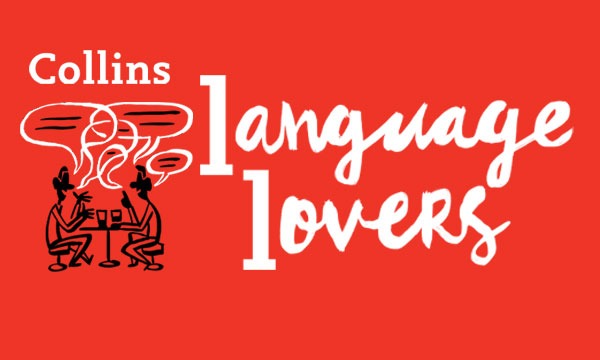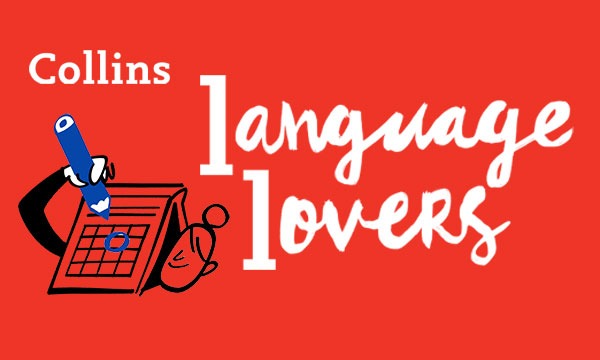This year is a major one for Formula One racing. There’ll be more Grand Prix (GP) races than ever before – twenty-four in twenty-one countries – including the final of the series in Abu Dhabi this December. In the British Grand Prix on the legendary Silverstone circuit in July, Lewis Hamilton, joint holder with Michael Schumacher of the world record for F1 World Championship wins, finished in the lead for Mercedes, beating Max Verstappen for Red Bull into second place, but overall at the time of writing Verstappen leads by a generous margin.
The forthcoming Grands Prix on successive Sundays are the Formula 1 Heineken Dutch Grand Prix 2024 on 25 August and the Formula 1 Pirelli Gran Premio d’Italia 2024 on 1 September. Sunday is always THE day of the weekend, when the big race happens. Friday and Saturday include free practice sessions (FP1, FP2, FP3) which allow drivers to check their cars are working as they should; Saturday includes a qualifying round, on the results of which places in the grid and the coveted pole position are allocated.
Motor racing as such predates F1 events by a surprisingly long chalk. In fact, the first road race – from Paris to Rouen, a distance of 126 km/78 miles – was held in 1894. The race was officially won by Peugeot even though their vehicle didn’t finish first. The first man past the post, the Comte (Count) de Dion, was deemed not to have officially won with his steam-powered effort because it required a human stoker to keep it going at its mind-boggling speed of 19 km/h (or 12 mph).
Events other than motor racing, such as horseracing and cycling, had been named Grand Prix before the first official Grand Prix of the Automobile Club de France held over closed roads at Le Mans in 1906. Competitive racing thereafter went through various incarnations, which included the designation of team colours, such as Britain’s racing green, and a partial move from roads to specified closed tracks, some of which are now legendary even to non-petrolheads: Le Mans, Monza, Silverstone.
What’s your formula?
The ‘formula’ of Formula One events is the set of rules that lays down parameters for car design, engine size, components, etc. as defined by the Fédération Internationale de l’Automobile (FIA), the world governing body for the sport. The aim is to make sure that cars of the same type compete against each other. The first championship series in 1950 consisted of a mere six European Grands Prix and the Indianapolis 500.
F1 racing, like any sport, has a terminology all its own. Some terms, in other contexts, are everyday (motoring) words: tyre/tire, track, flag, rumble strip, suspension, aerodynamics and skid. Some are specialist uses of words with other applications, such as (starting) grid and pit (meaning no. 10 in the Collins Dictionary). Some have applications in other sports, like sprint, championship, paddock and podium. And some are specific to F1 racing, such as open-wheel (meaning there’s no bodywork over the wheels), to pocket (meaning no. 23; to hem in), parc fermé, a secure area where cars are scrutinised post race, the racing line, the fastest line round the circuit, or slang, such as marbles for the discarded tyre debris that collects outside the racing line, or the controversial sausage kerbs, those steeply raked kerbs that have been implicated in several accidents.
Only two racing terms I can think of have become metaphors beyond F1 racing: pole position, meaning simply any advantageous position, and a pit stop, a break for food and rest on a motor journey. (I’m sure you’ll let me know if I’ve missed others!)
Readers familiar with these blogs (Thank you!) will know what I mean when I say the origins of many of the aforementioned words are the usual suspects: they mostly come from French or Latin. A handful, however, merit comment.
The ancestors of pole and pit, based on Latin, were already in Old English and are therefore early loanwords. Rumble, though it sounds ‘self-evidently’ onomatopoeic could well be a borrowing from Middle Dutch, which has given several words to English. Paddock is a seventeenth-century alteration of a word from Old English that lingered on in dialect in the form parrock and so illustrates two things: how the shape of words can change in unexpected ways over time and how dialect words can become mainstream. And grid is a shortened form of gridiron, a word probably derived from gredile, a griddle, way back in the thirteenth century.
Flags of different hues
And finally from this list, flag. On one hand, F1 racing has a whole semiotics of flaggery. We all know the chequered flag brandished at the end of the race – though nobody knows for certain its history, ‘chequered’ or otherwise. The F1 red flag means the session’s suspended; the green flag indicates the start of the race, and yellow, white, blue and black all have their meanings.
On the other hand, flag’s one of those words lexicographers label ‘of unknown origin’, or ‘of uncertain origin’ if they want to pretend they have some hunch. Interestingly, it appears in all of the modern Germanic languages – e.g. German eine Flagge, Dutch een vlag, Danish et flag (pronounced without final g, [ˈflæˀj]) – but is first recorded in English and so seems to be an export to those other languages, as well as to Polish flaga and Russian флаг.
And what about two unobtrusive yet fundamental related words that repay a little sleuthing, etymologically speaking? First, formula is from – you’ve probably already guessed – Latin, the language that’s the biggest single source of loanwords in English. It was borrowed into English in the first half of the seventeenth century. It’s the diminutive – that is, the miniaturised version, if you will – in Latin of forma and was created by adding the suffix element -ula, which lives on in English in the shape of -ule, as in globule and molecule. Which others can you think of?*
Originally formula referred, as Collins defines it, to ‘an established form or set of words, as used in religious ceremonies, legal proceedings, etc.’ That meaning led to the adjective formulaic, which says that any artistic object so described, be it a painting, disc, film or novel, is stale and unoriginal because it’s sticking to a tried and tested formula. It’s also the basis of the term formulae in linguistics, for words with a specific interpersonal function whose form never changes, such as Hi, Thanks and Congratulations!
That same original meaning also morphed into what the Collins Cobuild dictionary defines as a plan to deal with a difficulty or, in the phrase a formula for something, such as success, a surefire means of achieving that something. Perhaps surprisingly, the mathematical and scientific use of formula, as in algebraic formula, came rather later, towards the end of the eighteenth century.
And the formula of Formula One racing goes back to the late 1920s, but the Formula One category was agreed on in 1946, to take effect the following year, though the Turin Grand Prix of 1946 was run according to Formula 1 regulations in anticipation.
Other Romance languages have absorbed the Latin word formula, but with differing results. French formule, Italian formula and Spanish fórmula all have the scientific meaning that English has and can denote a turn of phrase or expression, but only French has the meaning ‘form to fill in’, and ‘an option’, such that you might see a restaurant advertising ‘Formule Entrée Plat Dessert 30 Euros’, meaning ‘the 30-Euro menu: Starter, Main, Pudding’.
Your chariot awaits
It’s interesting how we refer to ‘a self-propelled motorised vehicle for driver and passenger transportation’ varies across the English-speaking world and in other languages.
The standard term in British English car, which probably comes from Gaulish Celtic via Latin first and then French, has been in use since the early fourteenth century. Of course, originally it referred to an animal-drawn cart or carriage.
Once vehicles with an internal combustion engine started to be produced, following Carl Benz’s 1886 patenting of the invention, various words competed to name this novel invention: horseless carriage is first recorded from 1895, as is motor car, and car on its own from 1896. Autocar was also coined in 1895, but never really caught on, while automobile as an adjective had been coined a couple of decades before its conversion to a noun in 1895. It combines the Greek auto- suffix, meaning ‘self’, with the Latin-based mobile, ‘capable of moving’. Automobile is now the standard US term, shortened to auto as a modifier, e.g. the auto industry. In Scotland, the first part of motor car is often preferred, and people refer to their motor.
What do other languages do?
Broadly speaking, they follow two main routes. Either, similarly to English, they take a word that once referred to a cart or carriage and apply it to the new reality, or they take automobile or its separate elements. In the first grid you find French la voiture, Spanish el coche and el carro, Portuguese o carro and German der Wagen. But those languages hedge their bets by also having une auto, el auto and das Auto. Italian has automobile and auto, both feminine, but the ordinary conversational word is la macchina, literally ‘the machine’, which Russian also uses in the shape of машина (mashina). Polish has its own calque on ‘automobile’, samochód, while Russian takes the word whole in the shape of автомобиль (avtomobil’). It’s only Danish, Norwegian and Swedish which adopt a completely different approach by taking not the start but the end of the formal automobil to produce the everyday word bil.
TLAs are go
F1 racing has its share of three-letter acronyms (TLAs) that devotees will know well but which might fox the outsider. As mentioned, FP means ‘free practice’. The DN of DNF, DNS and DNQ means ‘did not’ ‘finish/start/qualify’, PB means personal best, as in other sports, and FTD is ‘fastest time of day’.
* And as for those -ule words, what about schedule, minuscule, module, capsule, granule and nodule?
By Jeremy Butterfield
Jeremy Butterfield is the former Editor-in-Chief of Collins Dictionaries, and editor of the fourth, revised edition of Fowler’s Dictionary of Modern English Usage.
All opinions expressed on this blog are those of the individual writers, and do not necessarily reflect the opinions or policies of Collins, or its parent company, HarperCollins.



